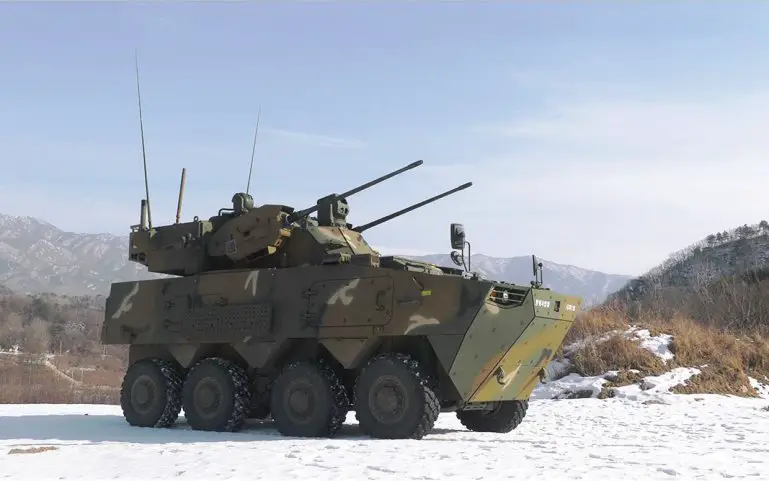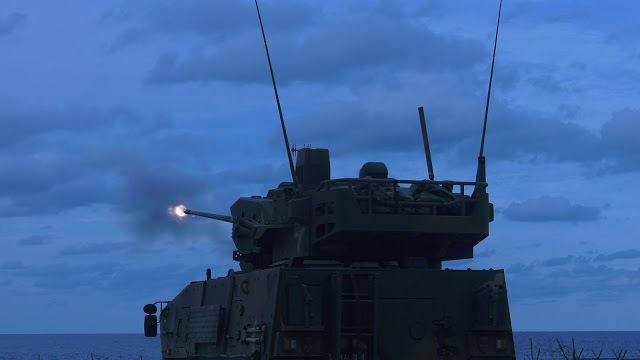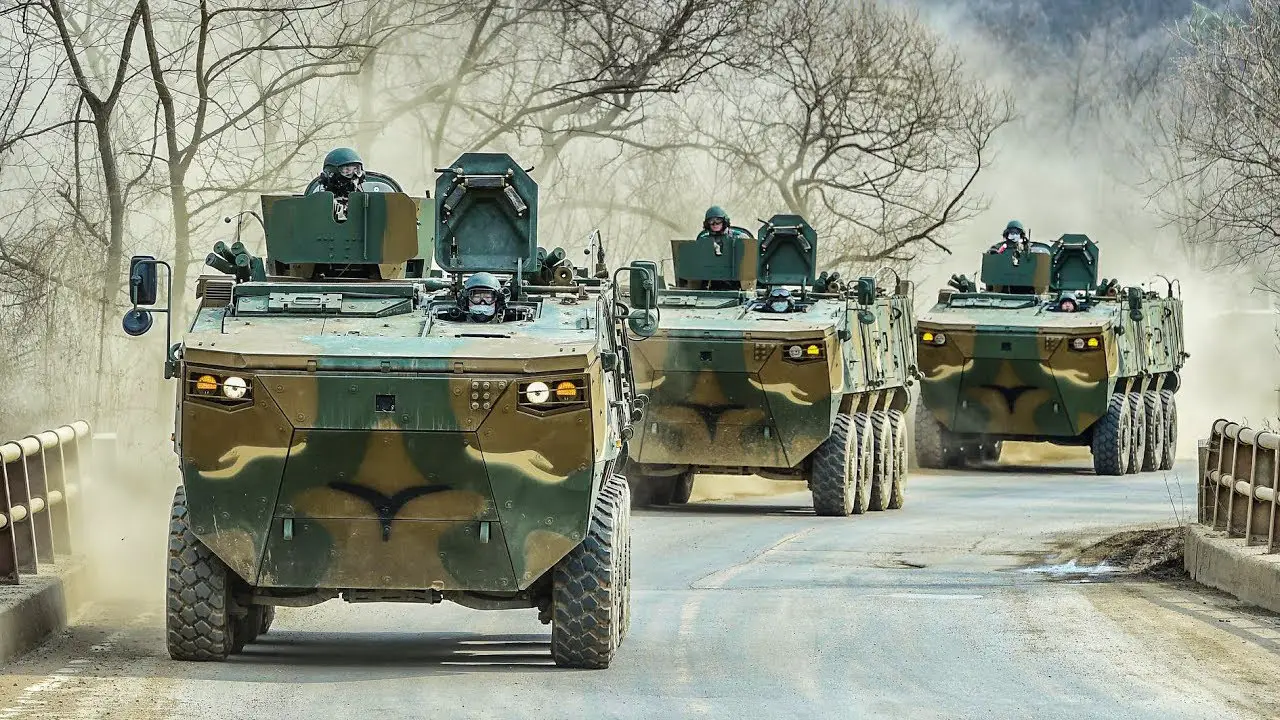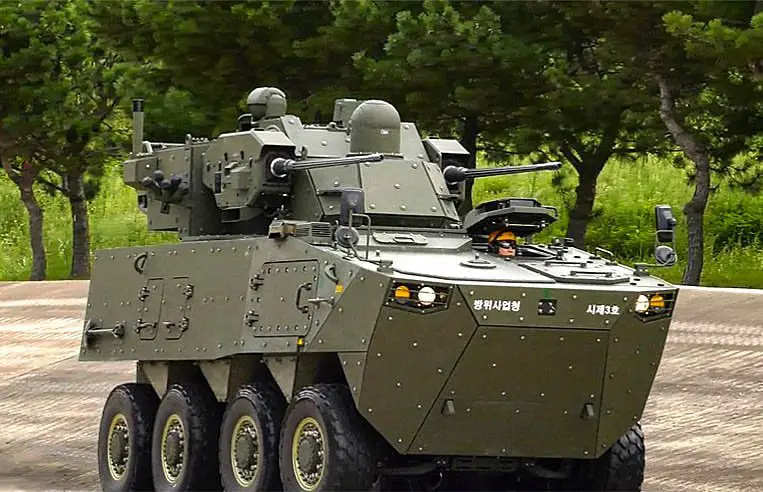South Korea has completed development of a new 30 mm wheeled self-propelled anti-aircraft gun (SPAAG) system based on 8×8 armoured vehicle. This system, dubbed Anti-Aircraft Gun Wheeled (AAGW) by its manufacturer, began development in June, 2015 with budget of 55 billion won (approximately $46.6 million) as replacement for aging Vulcan Air Defense System. The AAGW consists of modified Hanwha Defense K30 Biho turret and Hyundai Rotem K808 chassis. The country’s Defence Acquisition Programme Administration (DAPA) announced on 5 June that the system, development of which began in 2015, has successfully met all the requirements set by the South Korean military following final tests and evaluations. A new wheeled SPAAG might supplement the tracked K30 Biho SPAAG.

Developed by Hanwha for the Republic of Korea Army (RoKA), search radar from the original K30 Biho has been removed. Instead, it maintains wired and wireless datalink with TPS-880K Local Air Defense Radar (LADR) and Air Defense Command & Control Alert (ADC2A) Network. The use of existing proven technology and platform significantly reduced development time and cost as well. AAGW is equipped with an Electro Optical Targeting System (EOTS), which has 7 km detection range and 3 km engagement range, and back up manual targeting sight. The original Biho’s license-produced Raytheon EOTS was replaced in favor of the new Hanwha Systems EOTS, which has a built-in IRST feature and is 1/3 the size of the preceding model. The AAGW makes localized support and self-targeting functionalities possible through electron optical targeting systems and visual targeting systems.

Vehicle has a crew of three, including commander, gunner and driver, however manufacturer suggests, that it can accommodate more operators. Driver is seated towards the front on the right side, with the diesel power pack to the left. Commander and gunner are seated in the turret. Vehicle is fitted with Hyundai diesel engine, developing 420 hp. The KW2 has an automatic driveline management system. It has a central tyre inflation system, which is adjusted from the drivers station, and is fitted with run-flat tyres. This artillery system has an all-welded armored hull. It provides protection against small arms fire and artillery shell splinters. Vehicle can be fitted with add-on armor for a higher level of protection. It is also equipped with NBC protection system.

The Purpose of the development of Anti-Aircraft Gun Wheeled vehicle system was to defend allied forces’ points of interests, as well as defend friendly mobile troops, from low-altitude attacks by enemy aircrafts. The number of required personnel for self-propelled anti-aircraft gun (SPAAG) operation was reduced from 48 to 18 per company and the system boats 95% localization rate. This is crucial as the Republic of Korea Army will have much fewer personnel in the near future. The AAGW based on the chassis of the Hyundai Rotem K808 8×8 armoured vehicle is said to be much cheaper than the tracked K30 Biho, and the Korean Army currently plans to acquire approximately 270 systems. The AAGW will further enhance the Republic of Korea Army’s low-altitude-air-defense capability against low-flying aircraft and drones.

South Korea completes development Anti-Aircraft Gun Wheeled (AAGW)

South Korea completes development Anti-Aircraft Gun Wheeled (AAGW)